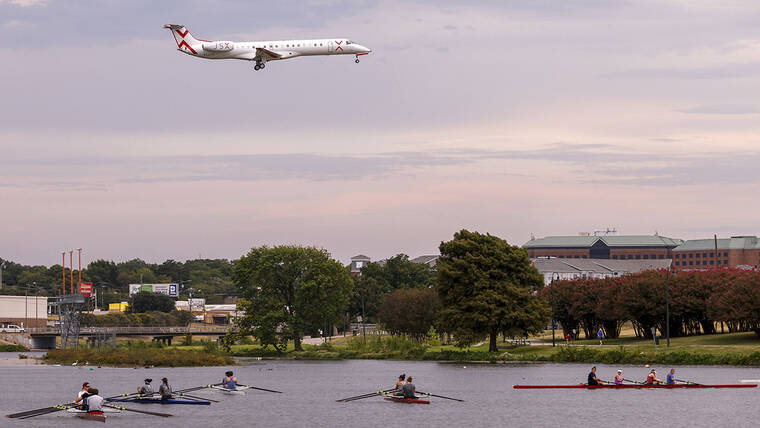Flying is getting more turbulent. Airlines better buckle up
Tens of thousands of flights take off and land without incident every day, all around the world. So when something tragic does happen, the world’s eyes become glued to the story — especially if it reveals the deadly side of an extremely common flight experience.
One man was killed and many others injured when a Singapore Airlines Ltd. flight encountered severe turbulence en route to Singapore from London on Tuesday. The airplane, a Boeing 777-300 ER, had to make an emergency landing in Bangkok. The deceased had a heart condition, which officials think may be behind his death.
We don’t yet know exactly what caused the agitated air currents, and an investigation is underway. It’s currently the monsoon season in Southeast Asia, and the resulting stormy skies may have contributed to the turbulence experienced by the plane. But we’d be foolish to ignore the role that the climate crisis is playing in making air travel choppier.
Most commonly caused by mountains, storms and jet streams, turbulence can be described simply as rough air. At its mildest, an aircraft may only experience slight erratic changes in altitude, but at the severe end, turbulence can cause large abrupt changes in altitude and angle of the plane. Extreme turbulence could even cause structural damage to the body of the aircraft, though modern planes are built to withstand a lot.
In the case of mountains and storms, rough air is fairly easy to avoid, but it’s possible to bump into turbulence where there are no clouds in sight. This clear-air turbulence (CAT) is impossible to see or predict, and yet can cause damage to aircraft and harm those inside. These sudden unexpected jolts are the most dangerous as they can occur while passengers and staff are moving around. In April, a man broke his leg as he returned from the toilet when an Air New Zealand flight to Auckland from Bali hit some turbulence and suddenly “dropped.” It therefore is the sort of thing that might keep a pilot up at night — and it’s been getting worse.
As our planet’s atmosphere warms, wind shears — variations in wind direction or speed — within jet streams are increasing and therefore strengthening clear-air turbulence. A 2023 study from researchers at the University of Reading showed that in the past 40 years, severe clear-air turbulence increased to 27.4 hours in 2020 from 17.7 hours in 1979 for an average point over the North Atlantic.
Last year, I wrote about all the ways in which the need to decarbonize flying was going to make air travel more expensive. But it’s clear large investments are needed to help aviation cope with the meteorological effects of climate change too.
Aircrafts are designed to withstand the worst that turbulence might throw at them. But as researchers point out in a 2017 study, many of the aircraft that will be flying in the second half of the century are currently being designed, so work ought to done to determine whether projections for turbulence necessitate any design or operational changes. A 2021 report from the National Transportation Safety Board made 24 recommendations aimed at reducing the incidence of turbulence accidents and associated injuries, including having flight attendants — who are seriously injured more often than passengers — be seated and belted earlier during the descent phase.
More significant investments should also be made into remote sensing of CAT and improved forecasts. On the detection front, there’s promise being found in updated radar systems, including laser-based radar (also known as lidar), as well as a new type of infrasound microphone developed by NASA.
Any investments will be worth it for the safety and comfort of passengers alone, but aviation executives will also be happy to know that the investments could lead to savings — or at least stop potential losses escalating. After all, turbulence isn’t cheap. The cost of choppy air to US airlines is estimated to be as much as $500 million annually, thanks to injuries, aircraft damage and flight delays, according to the National Center for Atmospheric Research. That will only shoot up as severe turbulence increases.
In a way, aviation is its own worst enemy: What it contributes in greenhouse gas emissions, it gets back in heightened dangers, costs and difficulties. The industry — and its passengers — will need to buckle up.
Lara Williams is a Bloomberg Opinion columnist covering climate change.


